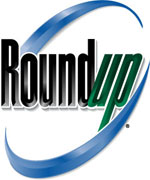 The world's oceans are turning acidic at what could be the fastest pace of any time in the past 300 million years, even more rapidly than during a monster emission of planet-warming carbon 56 million years ago, scientists said on Thursday.
The world's oceans are turning acidic at what could be the fastest pace of any time in the past 300 million years, even more rapidly than during a monster emission of planet-warming carbon 56 million years ago, scientists said on Thursday.
Looking back at that bygone warm period in Earth's history could offer help in forecasting the impact of human-spurred climate change, researchers said of a review of hundreds of studies of ancient climate records published in the journal Science.
Oceans' acidic shift may be fastest in 300 million years
Monsanto Shareholder Meeting Infiltrated by Activist (Video)
 In an exciting act of grassroots resistance to Monsanto and their GMOs that are ravaging the planet, activist Adam Eidinger has infiltrated a Monsanto shareholder meeting and posted the video up on Youtube. Eidinger discusses the negative impact of GMO crops, Roundup, and other Monsanto creations on human health and the environment. As a result, a shocked Monsanto spokesman (identified as CEO Hugh Grant by Eidinger) does his best to brush off the concerns and assure the activist that the company — the same company that has been found to be running slave rings on their GMO crop fields — cares very much about the concerns of their shareholders.
In an exciting act of grassroots resistance to Monsanto and their GMOs that are ravaging the planet, activist Adam Eidinger has infiltrated a Monsanto shareholder meeting and posted the video up on Youtube. Eidinger discusses the negative impact of GMO crops, Roundup, and other Monsanto creations on human health and the environment. As a result, a shocked Monsanto spokesman (identified as CEO Hugh Grant by Eidinger) does his best to brush off the concerns and assure the activist that the company — the same company that has been found to be running slave rings on their GMO crop fields — cares very much about the concerns of their shareholders.
The Big Fracking Bubble: The Scam Behind the Gas Boom
 Aubrey McClendon, America's second-largest producer of natural gas, has never been afraid of a fight. He has become a billionaire by directing his company, Chesapeake Energy, to blast apart gas-soaked rocks a mile underground and pump the fuel to the surface.
Aubrey McClendon, America's second-largest producer of natural gas, has never been afraid of a fight. He has become a billionaire by directing his company, Chesapeake Energy, to blast apart gas-soaked rocks a mile underground and pump the fuel to the surface.
"We're the biggest frackers in the world," he declares proudly over a $400 bottle of French Bordeaux at a restaurant he co-owns in his hometown of Oklahoma City. "We frack all the time. What's the big deal?"
Mystery virus kills thousands of lambs
 The Schmallenberg virus causes lambs to be born dead or with serious deformities such as fused limbs and twisted necks, which mean they cannot survive.
The Schmallenberg virus causes lambs to be born dead or with serious deformities such as fused limbs and twisted necks, which mean they cannot survive.
Scientists are urgently trying to find out how the disease, which also affects cattle, spreads and how to fight it, as the number of farms affected increases by the day.
Pa. Farmer Ratchets Up Battle Against Shale Gas Industry
 Stephen Cleghorn, a Pennsylvania farmer, knows the ins and outs of the natural gas extraction process called hydraulic fracturing. He’s studied the risks and dangers. He’s witnessed the damage it’s wreaked on the environment. He’s commiserated with fellow Pennsylvanians who have gotten sick from contaminated water and whose animals have died from toxic fracking fluids.
Stephen Cleghorn, a Pennsylvania farmer, knows the ins and outs of the natural gas extraction process called hydraulic fracturing. He’s studied the risks and dangers. He’s witnessed the damage it’s wreaked on the environment. He’s commiserated with fellow Pennsylvanians who have gotten sick from contaminated water and whose animals have died from toxic fracking fluids.
Soon after hearing about a geological formation known as the Marcellus Shale about six years ago, Cleghorn immersed himself in the topic. Eventually, through a self-education process, Cleghorn concluded that that the method used to extract natural gas from the shale rock and the associated industrialization of communities across Pennsylvania posed serious risks to air, water, public health and the welfare of animals.
Like Wyoming, Utah finds high wintertime ozone pollution near oil, gas wells
 High levels of winter ozone air pollution have been recorded in a Utah oil and gas field — after the phenomenon was seen in Wyoming — raising concerns that such pollution could become more widespread.
High levels of winter ozone air pollution have been recorded in a Utah oil and gas field — after the phenomenon was seen in Wyoming — raising concerns that such pollution could become more widespread.
A team of scientists is combing the Uintah Basin to determine the link between the area's 10,000 oil and gas wells and ozone levels, which in 2011 were higher in eastern Utah than in New York City.
Fukushima – worse than Chernobyl
 There is good news and bad news: The good news is that 11 months after the Fukushima meltdown, thousands of Japanese marched in the streets to protest the continuing operation of nuclear power plants in their country, and urged a shift to renewable energy.
There is good news and bad news: The good news is that 11 months after the Fukushima meltdown, thousands of Japanese marched in the streets to protest the continuing operation of nuclear power plants in their country, and urged a shift to renewable energy.
Some 250,000 people signed petitions to close the reactors in the Tokyo area. Meanwhile in the U.S. the Nuclear Regulatory Commission (NRC) approved the building of two new nuclear power plants in Georgia.
More Articles...
Page 117 of 200

 Environmental Glance
Environmental Glance






























